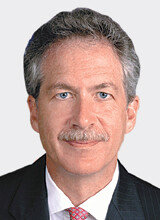The Roullier group, created in 1959 in Saint-Malo (Ille-et-Vilaine) has 8,500 employees worldwide (2019 figure) and today markets its solutions in 131 countries. The group achieved a turnover of 2 billion euros in 2019, of which 70% abroad. Interview with its president, Sébastien Chauffaut.
How did the group get through the health crisis?
After the shocking phase of the first confinement, we adapted. And we were able to react quickly because resilience is in the group’s DNA. Our employees were therefore able to continue their activity at our 97 industrial sites around the world. It was a necessity since agriculture never stops and our activity has remained essential. We have also seen, during this crisis, an awareness of the importance of agriculture and therefore food autonomy.
With the creation of the “World Innovation Center” in 2016, you are at the top speed in terms of research. Why ?
Innovation has been at the heart of the company’s foundations for over 60 years. With the CMI, we wanted to pool our research carried out until then in different places around the world. Today, nearly 120 employees, of 15 different nationalities, work at the Saint-Malo site. The competition Innovation Awards, which rewards researchers in animal and plant nutrition, also goes in that direction. The promising results of these projects will be put at the service of our subsidiaries Timac Agro and Phosphea and therefore of the agriculture of tomorrow, enlightened and respectful of the natural balances. A major issue when we know that France has lost 20% of its arable land in fifty years. And that on a global scale, these have been split in two.
How do you approach the future?
With the feeling that we are doing something important. We recently decided on a three-year development plan with the objective of growing our turnover by one billion euros. Today, our activity is concentrated at 75% in ten countries. However, the constraints linked to certain crops, such as wheat or soybeans, are the same everywhere. We therefore have significant geographic development potential.
– .


